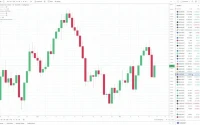Title: Smartphone Apocalypse Delayed? Memory Crunch Meets Reality Check
The smartphone market is bracing for impact. A looming memory chip shortage, flagged by Xiaomi and impacting Samsung, threatens to jack up prices in 2026. The narrative is clear: rising component costs, particularly memory and application processors (APs), will squeeze manufacturers, potentially leading to higher prices for consumers and even market exits for weaker players. But let's dig into the numbers and see if this doomsday scenario holds up.
The Memory Price Rollercoaster
Xiaomi President Lu Weibing has been vocal about the impending crunch, stating the company has secured its 2026 memory supply but warning of price increases. This isn't just idle chatter; memory chip prices did indeed hit a low in 2023, and the upward trajectory is expected to continue. The surge is largely attributed to AI-driven demand for HBM (High Bandwidth Memory), putting pressure on overall memory production. Samsung, facing similar pressures, is reportedly evaluating Galaxy S26 pricing with rising memory and AP costs in mind.
TrendForce has already adjusted its 2026 global production forecasts, projecting a 2% year-over-year decrease in smartphone output (previously a 0.1% increase) and a 2.4% decrease in notebook production (previously a 1.7% increase). These revised forecasts are a direct consequence of the anticipated memory crunch and its impact on system costs. [News] Memory Crunch Hits Smartphones: Xiaomi Flags 2026 Price Hikes, Samsung Under Memory, AP Pressure
But here's where the picture gets a bit murky. We're relying on statements from company executives and industry analysts. While these sources provide valuable insights, they also have vested interests. Xiaomi, for instance, is actively pushing its premium models like the Mi 17 series (or perhaps the Xiaomi 17 pro, if they stick to their naming conventions), a move that conveniently aligns with a narrative of rising component costs justifying higher prices.
Is this a genuine crisis, or a carefully orchestrated narrative to justify premium pricing strategies? It's difficult to say definitively. We also don’t have a firm grasp of the exact percentage increase consumers can expect. The article mentions Samsung raised prices on certain memory chips by 30-60% this month. But how does this translate to the final price of a smartphone?

Samsung's Balancing Act
Samsung's situation is particularly interesting. On one hand, soaring memory prices are expected to boost the company's Device Solutions Division, which manufactures memory chips. On the other hand, these same prices threaten the margins of its Mobile eXperience (MX) business, responsible for smartphones. The company is caught in a classic conflict of interest.
The article also mentions a 25.5% year-on-year jump in Qualcomm application processor (AP) expenses for Samsung. This adds another layer of complexity. Samsung paid around 11 trillion won (roughly $8.4 billion USD at current exchange rates) for APs in Q3. That's a substantial expense, and it's putting even more pressure on production costs.
I've looked at hundreds of these earnings reports, and this is the part of the report that I find genuinely puzzling. How much of this price increase is due to genuine component shortages, and how much is simply an attempt to pad profit margins?
It’s a high stakes game of supply and demand, and Samsung has to carefully balance its role as both a component supplier and a smartphone manufacturer. Will they prioritize maximizing profits from memory sales, even if it means hurting their smartphone business? Or will they find a way to absorb some of the cost increase to maintain their competitive edge in the smartphone market?
So, What's the Real Story?
The "smartphone apocalypse" narrative is probably overblown. While a memory crunch is undoubtedly real and will likely lead to some price increases, the extent of the impact remains to be seen. Manufacturers like Xiaomi and Samsung will likely use this as an opportunity to push premium models and potentially squeeze out smaller competitors. But a complete market collapse? Unlikely. The phone industry is more resilient than that.










